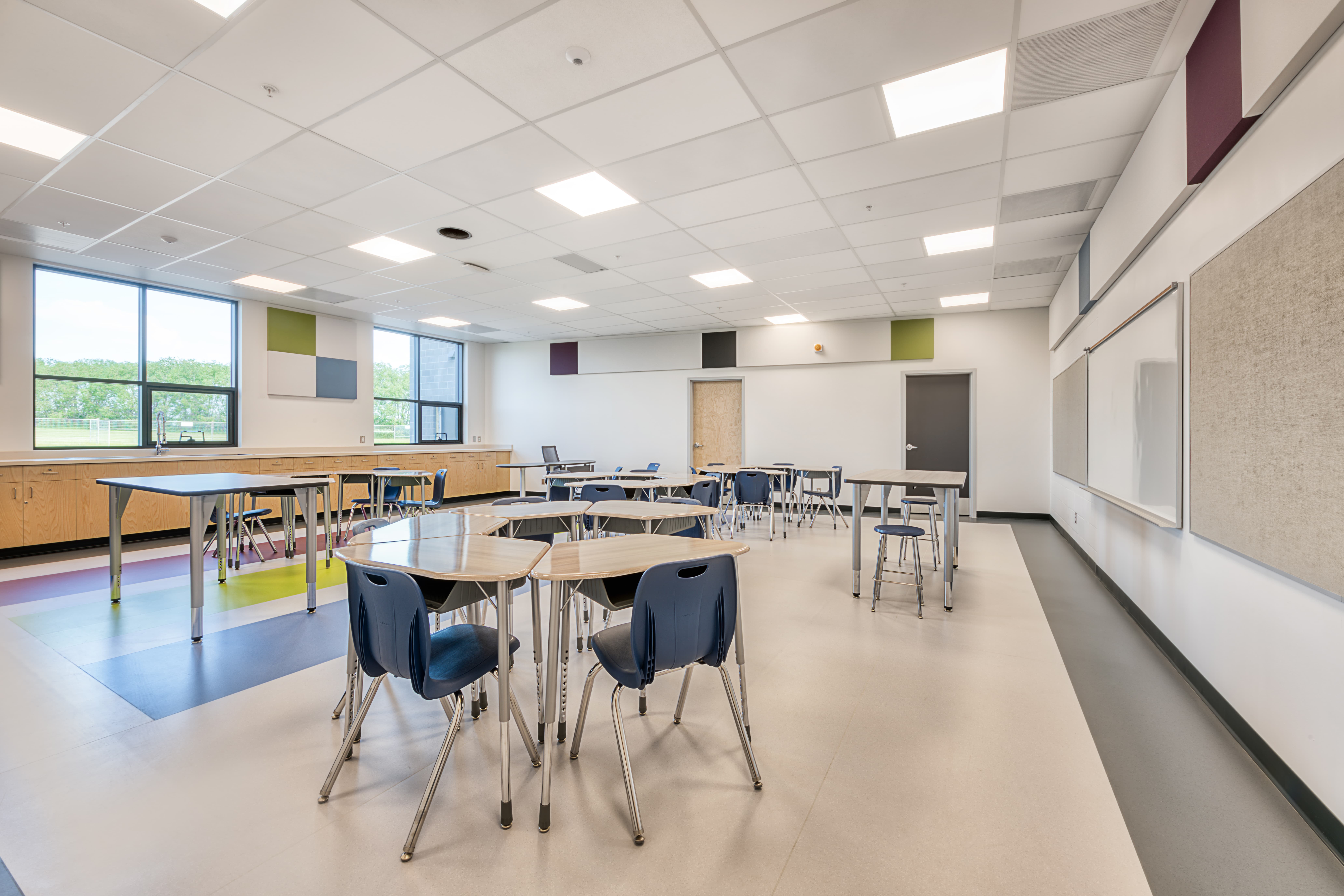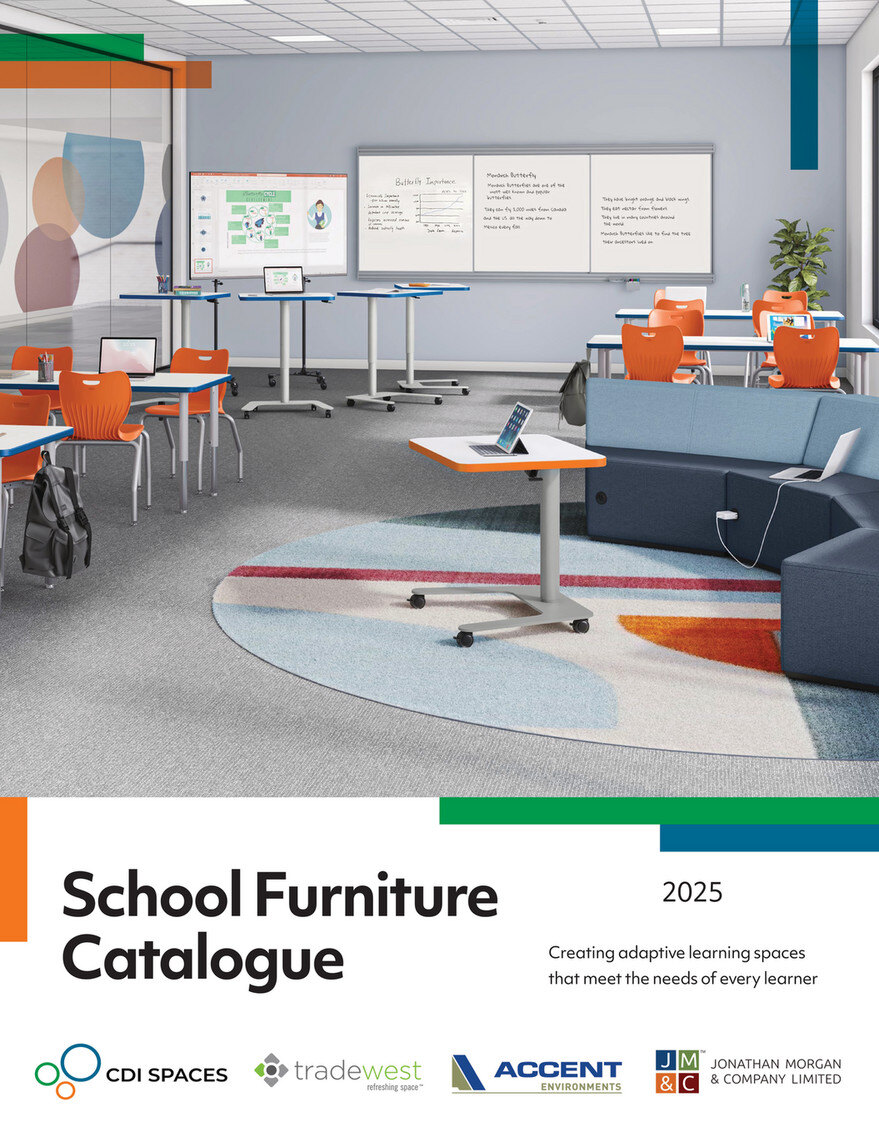From Classroom to Collaboration Hub: Simple DIY Strategies for Adaptive Learning
February 26, 2024

Curiosity and exploration are two essential components of successful learning. And while widespread access to the internet now allows students to venture into a vast world of knowledge, there's still so much that tactile and kinesthetic experiences have to offer students.
Thankfully, innovation in classroom design means that 'high-tech' doesn't equate with kids being tethered to screens all day. As educational spaces evolve into modern learning environments, they're becoming more flexible and facilitating more physical engagement than ever before. Single-use spaces are being replaced with dynamic classroom designs that suit the diverse needs of students.
Whether you're gearing up for a whole-classroom reboot or just looking for a few ways to create more adaptive spaces in your classroom, these tips from our CDI experts can help you bring a fresh approach to your learning environment.
Planning Your Classroom Makeover
Every classroom makeover — whether a DIY project or one you partner with a professional to undertake — should start with the input of key stakeholders. We suggest starting with informal surveys or discussions where your administrators, teachers, and students can voice what matters most to them. Here are some questions to inspire your exploration and help you define your makeover goals:
Questions for Administrators
- What challenges/issues do administrators want to address in the classroom setup?
- What values, goals, and ideas guide changes administrators want to make in their schools?
- What metrics will administrators use to determine the success of the classroom makeover?
Questions for Teachers
- What do teachers feel they need more space for in their current classroom?
- What is the daily traffic flow in their classroom like?
- What unique accessibility and diverse learning needs do teachers need to accommodate for their students?
Questions for/Regarding Students
- What excites and engages students in their learning environment currently?
- What parts of the classroom go unused, and which ones attract students regularly?
- What customization options best serve students (flexible seating, varied desk options, etc.)?
Once you have gathered feedback and formed potential goals for your makeover, determine your 'low-hanging fruit.' What changes could you easily make to add value to all three groups? Next, identify which improvements will have the most broad and long-lasting impact on those using the space. Consider how you could optimize your classrooms by implementing these improvements.
Selecting Flexible Furniture and Materials
When you intentionally design an adaptive learning space, you can make your classroom sustainable and long-lasting. Rather than randomly choosing trendy pieces to add to classrooms, furniture that is durable, multi-functional, and truly student-friendly should be selected. Adjustable tables, mobile chairs, and modular storage units are a few furniture items most commonly used in adaptive learning spaces.
Consider the age group you're designing for. What furniture will these students be able to move around the room and adjust themselves? Which table arrangements best suit your space so teachers and students can move around them quickly? Regardless of your student's ages, it's also crucial to include diverse learning zones in your design. What types of group and individual work do students need to do in this space? Where can students intentionally disengage (i.e., find solitude to focus, study, or read) in the classroom?
DIY Tips and Tricks for Classroom Setup
One of the most significant benefits of an adaptive learning space is reconfiguring a classroom according to the activity at hand. Students can increase ownership of their classroom experience, and teachers can gain insights into how their students learn to accommodate their needs better. With a modest budget and a bit of inspiration, our DIY ideas can encourage higher student engagement and ownership in any classroom.
Interactive Learning Walls: Transform a blank wall into an interactive learning space using chalkboard or whiteboard paint. Allow students to freely use this area for brainstorming, problem-solving, sharing inspiring and encouraging messages, or collaborating with peers.
Student-Created Bulletin Boards: Designate a bulletin board as a student-led space. Rotate which group of students gets to showcase their interests or achievements throughout the year to foster a sense of community and early leadership.
Flexible Display Areas: Install temporary hooks or wire grids on walls to create flexible display areas for student work and rotating educational posters.
Classroom Gardens: Using repurposed containers or recycled materials, create a small classroom garden or worm compost bin that students can contribute to. This brings nature into the classroom and teaches students about plant growth, ecology, and sustainability.
Sensory Stations: Set up sensory stations using simple materials like rice, sand, or water in bins or trays with lids that students can easily stow away on a shelf. Students can explore sensory experiences while developing fine motor skills and cognitive abilities.
Maintaining and Evolving Your Adaptive Classroom
Not only can an adaptive classroom change to suit the daily needs of your students, but it can also transform through many seasons and school years. Design your initial makeover with evolution in mind to keep your students, teachers, and classrooms on the cutting edge of educational best practices and thriving outcomes. To ensure you're making continuous improvements, create a simple system where teachers and students can express what's working and not working for them in the classroom. Revisit the goals from your planning process and evaluate if and how your space meets them each semester.
Follow our blog for regular classroom inspiration and updates, or consider partnering with CDI to tap into the latest educational design and technology innovations to keep your learning environments up to date. Designing and maintaining an adaptive learning space is a collaborative and dynamic process—just like learning itself!
Meet with a CDI design consultant today to explore innovative, adaptive classroom solutions for your school.

